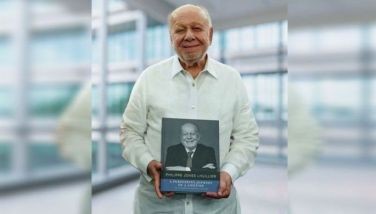The only remaining possible solution to the Palestine problem

(Conclusion)
Unlike previous peace plans from Kissinger to Kushner, my Two-States-But-Far-Apart plan maximizes everyone’s benefit, while limiting each party’s perceived costs/concessions.
Plan A: Saudi Arabia allocates 10,000 sqk, 0.5 percent of its 2,150,000 sqk, plus $100 billion, to establish a sovereign New Palestine. Five million Palestinians into 10,000 sqk gives 500/sqk population density, similar to Israel’s, ten times better than Gaza’s 5,500/sqk.
$100 billion represents a generous initial stake, say $100,000 per head for the first million inhabitants to get the ball rolling. With sovereign New Palestine established, others will rush to fund further development – Brunei, Japan, China, Singapore, the EU.
Plan A would earn Saudi Arabia more world prestige and influence than all its sports-related schemes and Cities of Tomorrow in the sand. The Palestine problem would be solved cheaply, easily.
But suppose the Saudis simply won’t yield territory?
Plan B is Egypt, more expensive than Plan A, but still easily affordable: oil-wealthy Arab states buy 10,000 sqk (1 percent of Egypt’s area), then provide funds for infrastructure, etc. Egypt has $165 billion of foreign debt and a moribund economy. It might be tempted by a deal which pays off a chunk of debt while also reviving tourism and Suez Canal income.
For the oil-rich Arab states, it’s an investment for their ethno-cultural legitimacy – particularly vis-a-vis non-Arab Iran, which funded much of the trouble. Would they part with five percent of their accumulated wealth to establish peace and quash Iranian ambitions too? Sure they would. Once any among Kuwait, Qatar, the UAE or Saudi Arabia plunked down serious money, the others would join in solidarity.
Addressing internal dissenters, they could also recall that they owe their sovereignty and their oilfields to serendipitous decisions by the same countries that spawned the Palestine problem. Had it not been for the British, Kuwait would have remained a minor Iraqi tribe. And had it not been for the Americans, Saddam Hussein would have made it a minor tribe again, then swallowed the emirates and the Saudi oilfields on the Arabian Gulf (i.e., all of them). Repaying five percent of Divine Providence would not be unjustifiable.
Previous overtures asked Egypt to swallow yet more immigrants. It won’t, so the time has come to talk not refugee tent camps but sovereign land. Not vague promises from the US and Kushner (who, being Jewish, was the wrong person to tell Muslims what to do – didn’t anyone in Washington understand that?), but real money from brother Arabs, cash on the barrel.
Egypt’s northern Sinai cannot be the site for New Palestine. It adjoins Israel. No one seems to have understood this, either. A more plausible location would be southern Sinai, separated from both Israel and Egypt by empty desert plus mountains, and little use to Egypt as a country. How about a mixed flatland-and-mountain parcel around coastal El-Tor, population 30,000?
If Egypt balks, Plan C will cost less than B: Jordan (89,000 sqk, only $40 billion of debt, same GDP/capita as Egypt, a respected UK-educated monarch in charge). Jordan’s northeastern protrusion is essentially unoccupied. The entire protrusion was allocated to then Transjordan in 1921-22 solely so an Iraqi-oil pipeline could run to Palestine over British-controlled territory. This pipeline was closed in 1948, so the protrusion’s rationale has long been moot, and Jordan has done absolutely nothing with it so far. Zip.
The biggest town, Ruwaished, has 15,000 people. The area has sparse rainfall (150 mm annually, but with terrain that can be dammed, better than the West Bank’s zero or Gaza’s uncollectable 300 mm), pleasant sub-tropical temperatures (like Darjeeling, but arid) and better protection from sea-level rise (600+ meters elevation v. Gaza’s 14). With intelligent development, an idyllic 10,000 sqm New Palestine could be situated in a corner of Jordan’s protrusion.
Plan D is North Africa, somewhat further out but seven more countries where a New Palestine could conceivably be located, given the right custom-tailored inducements.
There are undoubtedly problems with each of these alternatives, but chances are that a practical deal can be found somewhere in this long lineup of possible New Palestines.
When it was the lone belle at the ball being badgered by Jared Kushner, Egypt resisted. With Plans B, C and D, there would be eight belles (Egypt, Jordan, Western Sahara, Morocco, Algeria, Tunisia, Libya, Sudan) and only one dance ticket to be punched. The chances are good that one of these countries will deal.
In a Two-States-But-Far-Apart solution, Israel would have a 90 percent win, its sole concession being world sympathy. The Palestinians would also have a 90 percent win – living space, new infrastructure and buildings and a sovereign New Palestine, just not inside the original Palestine. It’s a fair enough deal, and a genuine win-win-win for Palestine, Israel and the Arab world.
The Two-States-Side-by-Side solution is supported by almost all the countries on earth. All of them are wrong.
For 75 years Palestine peace plans have been concocted by statespersons who can’t see the obvious and who ask for major compromises against self-interest. Many of them will object to my Two-States-But-Far-Apart solution with all the specious logic and distorted facts at their command.
But, all their past solutions have indisputably been unadulterated long-term failures. Meanwhile, their present solution (“Forgive, forget, just play nice from now on”) is simply naive, not to say very, very stupid.
Time to end the Palestine problem – with the Two-States-But-Far-Apart solution.
- Latest
- Trending





























